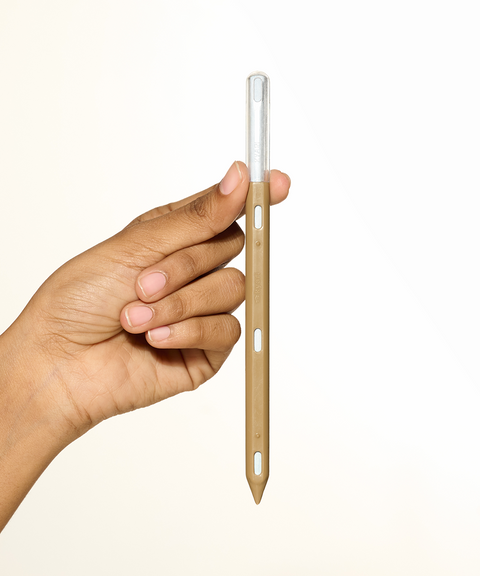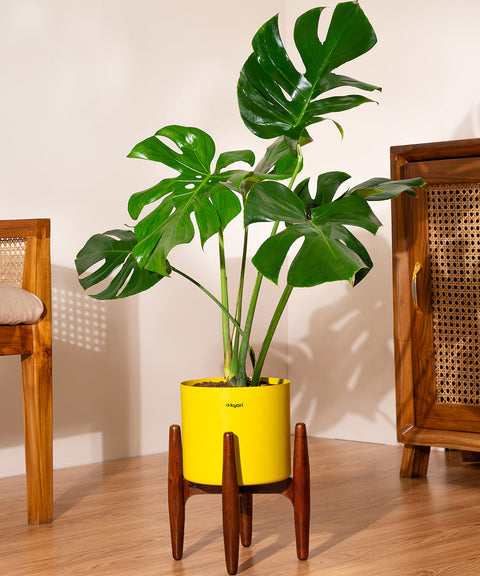Are you fond of bamboo and would want to have that massive plant in your house? Given the height of the bamboo plant, you may be wondering how we manage to have it "inside" our house. We're not kidding, though!
We at Kyari have introduced the Lucky Bamboo Plant, also called Dracaena Sanderiana, a stunning and adaptable indoor plant, for our plant-loving but eco-aware customers. The Lucky Bamboo Plant, which resembles a small bamboo plant and has long green stalks resembling bamboo, is a tropical water lily that is endemic to Central Africa. Because of its beauty, ease of upkeep, ease of growth, and ability to draw prosperity and optimism, bonsai plants are typically found in workplaces.
Lucky Bamboo Plant Significance
As a prominent element of Chinese culture, the Lucky Bamboo plant’s botanical name, Dracaena Sanderiana, has an intriguing history dating back to around 4,000 years ago. It is a member of the Asparagaceae (or Asparagus family). However, because of its Asian origins, according to Asian culture, it represents luck and wealth. For this reason, it is typically seen at our homes during poojas and other holidays and also become the Lucky Bamboo office plant.
That meant more than just being a plant associated with good fortune, though, when discussing Chinese culture. It was believed that the more stalks an object had, the more important it was! It was believed that two stalks gave good fortune and love twice over; three stalks provided money and happiness together with a long life; six stalks signified success; and twenty-one stalks, in a similar vein, indicated richness and blessings. Therefore, if you give this plant to a loved one, it is said to bring pleasure and double fortune to that house. Since it is being presented to us rather than bought, the same is expected to happen to us as well.
Facts about Lucky Bamboo Plant
Here are some Lucky Bamboo plant facts.
Cultural Root
The Lucky Bamboo Plant originated in Central Africa and has cultural origins in several Asian nations, including China. On the other hand, when we discuss India, we are fairly familiar with the bamboo species known by a different name, Kalpavriksha, which has spiritual integrity, constancy, and emotional stability recorded in the Rigveda. Comparably, the Lucky Bamboo Plant, which bestows luck, tenacity, and wealth, possesses the same attributes.
Number Power
The symbolic effectiveness of this plant depends upon the number of stalks it has as it tells how lucky you will get on obtaining it.
Two stalks – Love and double fortune
Three stalks – Happy life, long life and wealth
Five Stalks – Health and Wellness
Six Stalks – Success and Luck
Seven Stalks – Luck
Eight Stalks – Fertility, Growth, Prosperity
Nine Stalks – Triple fortune in well-being, success, and luck
Ten Stalks – Satisfaction
Twenty-One Stalks – Seven times more happiness and energy, wealth, safety and health.
Feng Shui
According to Chinese customs and Feng Shui, the Lucky Bamboo Plant is believed to provide peace and positive energy to the area in which it is housed. But this plant has many different meanings and messages, especially depending on how many stalks it has.
Health and Well-Being
The plant comes with many health benefits as well. Placing the plant indoors is meant to purify the air as it can remove the toxins from the environment very easily.
Low Maintenance
Owners of lucky bamboo plants don't need to give it a lot of attention. Your life may be transformed with only a weekly watering and a little care. But make sure there is plenty of indirect sunlight available for it to flourish properly.
Gift of Fortune
It is said that the Lucky Bamboo Plant should be gifted instead of purchased for personal use as it brings double fortune with peace, wealth, and better health.
Benefits of Lucky Bamboo Plant in Home
The Lucky Bamboo Plant benefits can be it spiritual, emotional, or health.
Attracts Good Luck
As per the Chinese culture, the Lucky Bamboo Plant is meant to attract positive energy and harmony at home from the past thousands of years and is now believed by people globally.
Purifies the Air
Just like many other indoor plants, this plant is a good air purifier as it removes the toxins and chemicals present in the air in its surroundings. This enhances the air quality, leading to healthy breathing.
Enhances the Ambiance
Speaking about fortune is another matter entirely, but arranging the Lucky Bamboo Plant lends the space an air of refinement. It creates a calming, soul-connection with the plant in the eyes. For a fuller appearance, you may even adorn the soil's surface or the container itself.
Easy Growth
Both indoor plants and our small bamboo plant are simple to grow. It just takes a few days for it to grow once you put it in a container or planter. Though it does need a lot of water, Kyari pots and planters provide self-watering pots that alleviate the problem of water logging and allow the plants to receive regular hydration. Thus, you just need to give your plant a weekly watering.
How to Grow and Care for Lucky Bamboo Plants
For the new gardeners, the Lucky Bamboo Plants' care and growth can be the easiest task but only till the time you are using good quality soil and water.
Lucky Bamboo in Water
It is crucial to remember that Lucky Bamboo is susceptible to pollutants and chlorine, both of which are frequently found in tap water. Therefore, distilled or bottled water is utilized to water the plant instead of tap water.
Lucky Bamboo in Soil
Potting soil that is high in nutrients is crucial for the Lucky Bamboo plant's growth. However, you must make sure that the soil is well-drained, meaning that it is damp but not saturated.
Pruning
Regular pruning is very important to the plant's healthy growth. The Lucky bamboo leaves will get heavy and may begin to lose their form if it is not cut promptly. Avoid cutting the main stem and work your way down to the offshoots.
Fertilization
For this plant to be healthy, fertilizer is needed. For a month, just one drop of fertilizer will be enough. However, you could try the organic plant manure if you don't want to use liquid fertilizer.
Conclusion
These days, having a lucky bamboo plant at home is a benefit since it requires little care and gives good fortune. So, get the Lucky Bamboo Plant online from KYARI if you're seeking a thoughtful present for your loved ones.
FAQs on Lucky Bamboo Plant Benefits
1. Where to place Bamboo plants in the house?
The best place to keep a bamboo plant as per Vastu is the east or southeast corner of the home.
2. What are the ideal growing conditions for Lucky Bamboo?
The plant grows best in warm conditions with indirect sunlight, a good amount of water, rich potting soil, moderate humidity, and little amount of fertilizer.
3. Why are the leaves of my Lucky Bamboo turning yellow?
The yellow leaves of Lucky Bamboo are usually due to unfavorable conditions such as direct sunlight, over-watering, excessive fertilization, or too much temperature change.








 Limited Time Deal
Limited Time Deal
 BYOB - Small Plants
BYOB - Small Plants
































































































